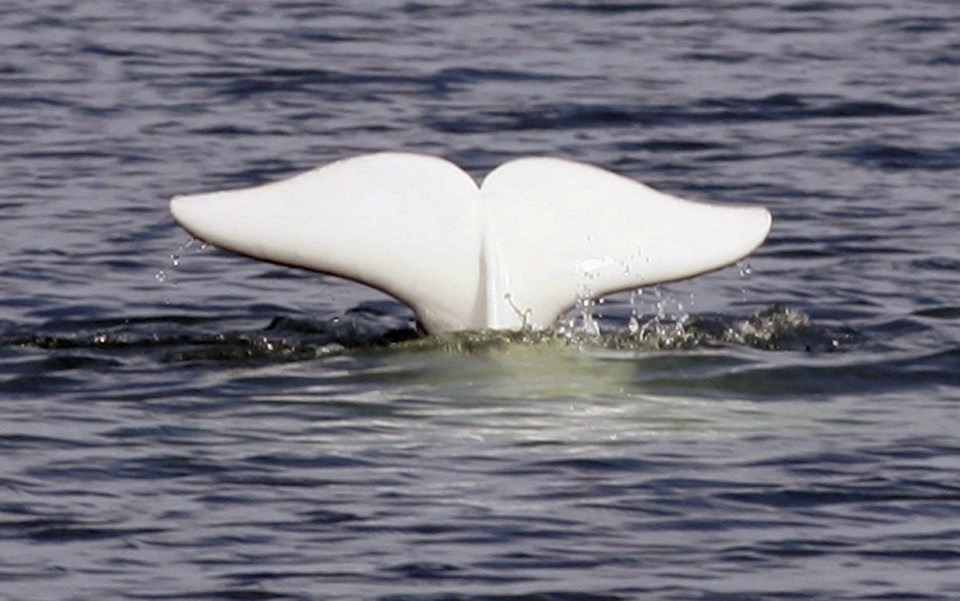Researcher Laurenne Schiller says "it's not rocket science" that recovery for threatened or endangered species in Canada is driven by stopping the primary cause for their decline.
"If you take away the cause of population decline, they're going to recover," said Schiller of research she and others recently published in the peer-reviewed journal Facets.
"But what's surprising is, I guess, how little that's actually been accomplished."
The study shows just a handful of species at risk are faring better now than they were two and three decades ago, in the early years of Canada's system for assessing and protecting them.
That regime includes the Committee on the Status of Endangered Wildlife in Canada, an independent panel formed in the late 1970s to advise the federal government, as well as the Species at Risk Act first passed in 2002.
Yet little has changed for the threats facing wildlife in Canada, the paper says, particularly when it comes to habitat loss and degradation.
The study published in January involved a two-pronged analysis. The researchers started by looking at the trajectories of 36 species that represent the original taxonomic groups assessed by Canada's endangered wildlife committee.
They found the risk of extinction had decreased for just eight of those species relative to the past, and "the only significant difference" in species doing better or worse was whether the primary cause of their decline had been stopped.
Historically, Schiller said some species faced singular threats, such as the now-banned insecticide DDT poisoning peregrine falcons and pushing them to the brink of extinction, or the overexploitation of sea otters during the colonial fur trade.
Both of those species are now faring better.
"When we can identify what the problem is and when there's action to address it, very, very targeted, we see really good outcomes," said Schiller, who is a post-doctoral fellow affiliated with both Carleton and Dalhousie universities.
But the road to recovery has been more challenging for species that are struggling because of habitat loss and degradation from industry and other development.
The beluga whales of the St. Lawrence estuary are one such species that is worse off today, said Schiller, adding she "fell in love" with belugas as a child visiting the Vancouver Aquarium and the species motivated her to become a marine biologist.
"These whales live in one of the busiest shipping transport areas in North America, if not the world, the St. Lawrence estuary," she said. "They're bombarded with noise pollution, they're bombarded with chemical pollutants from the region."
Schiller said it's "excellent" that a protected area exists for the whales, along with more recent measures, such as seasonal speed limits for vessels.
"It's more than a lot of species have," she said of the marine park created in 1998.
But the belugas are now at a higher risk of extinction, Schiller said, as the existing measures have not addressed the habitat degradation at the root of their decline.
"I think of it in human terms," she said. "If someone is diagnosed with a life-threatening illness and … you're offering them, you know, a healthy diet and healthy lifestyle and complimentary yoga sessions, all of that is great, and it will probably help them prolong their life. But it's not actually treating what is killing them."
The Canadian economy is highly dependent on extractive resources, which infringe on wildlife habitat, and those constraints are evident in government decisions related to protecting endangered species, Schiller said.
The paper also notes that three decades ago, Canada's own species recovery documents emphasized that, "although development projects produce short-term economic benefits, a truly sustainable economy requires a healthy environment."
Schiller said the Canadian government has contributed to international agreements and made commitments related to addressing climate change and biodiversity loss at the global scale, and Canadians typically say they care about wildlife.
"But unfortunately, when we look at the evidence that we have, it's showing that right now … it's not enough," she said.
In addition to looking at the 36 "sentinel" species, the study looked at species assessed by the wildlife advisory committee at least twice between 2000 and 2019.
The researchers found just 1.9 per cent, or eight of 422 species, had experienced both population growth and decreasing risk of extinction.
"(It's) a really small number when you think of the time and effort and money that has gone into conservation in Canada," Schiller said of the recovering species.
In both analyses, the driving factor behind a species faring better or worse was whether the primary cause of the decline had ceased.
On a hopeful note, Schiller said the study shows eliminating that threat offers a pathway to recovery.
"Nature is incredibly resilient, if we give (species) the space and enabling conditions to recover."
This report by The Canadian Press was first published Feb. 9, 2025.
Brenna Owen, The Canadian Press



